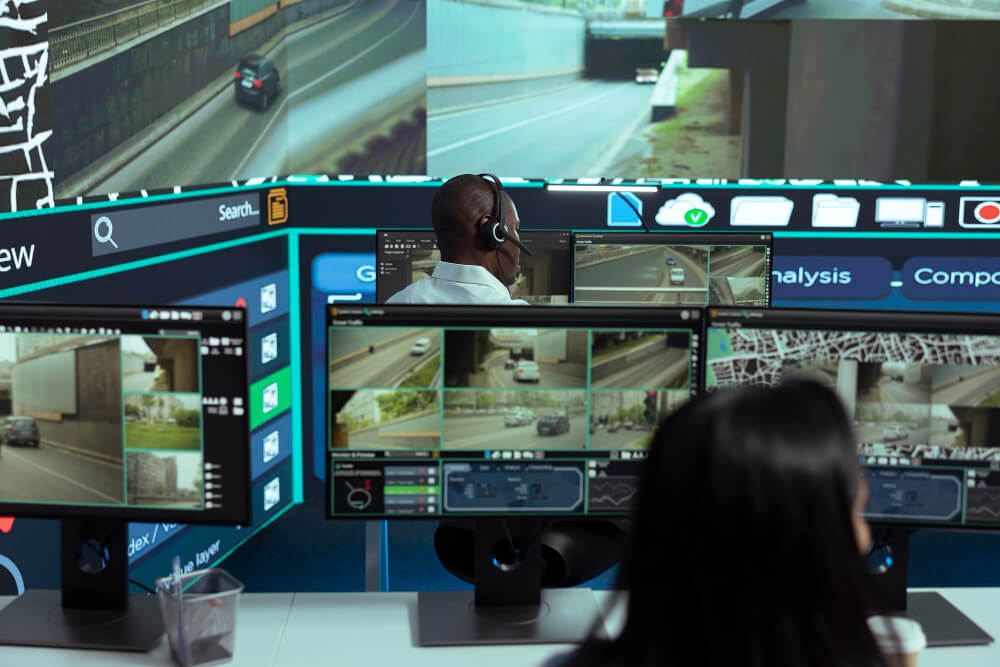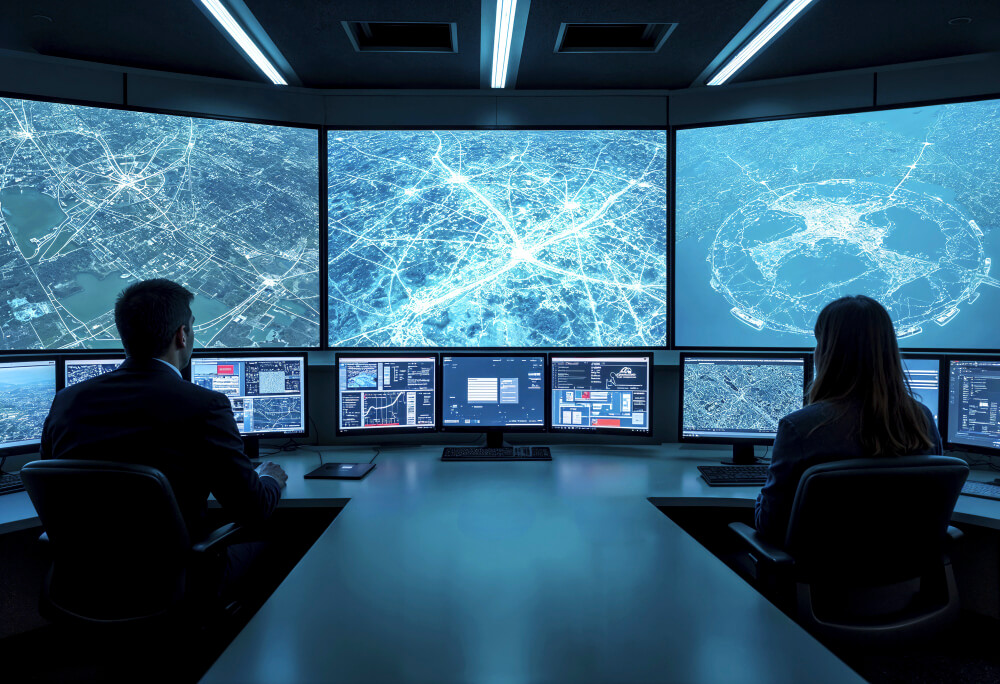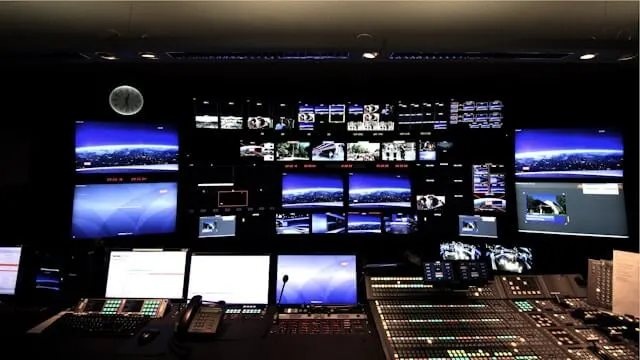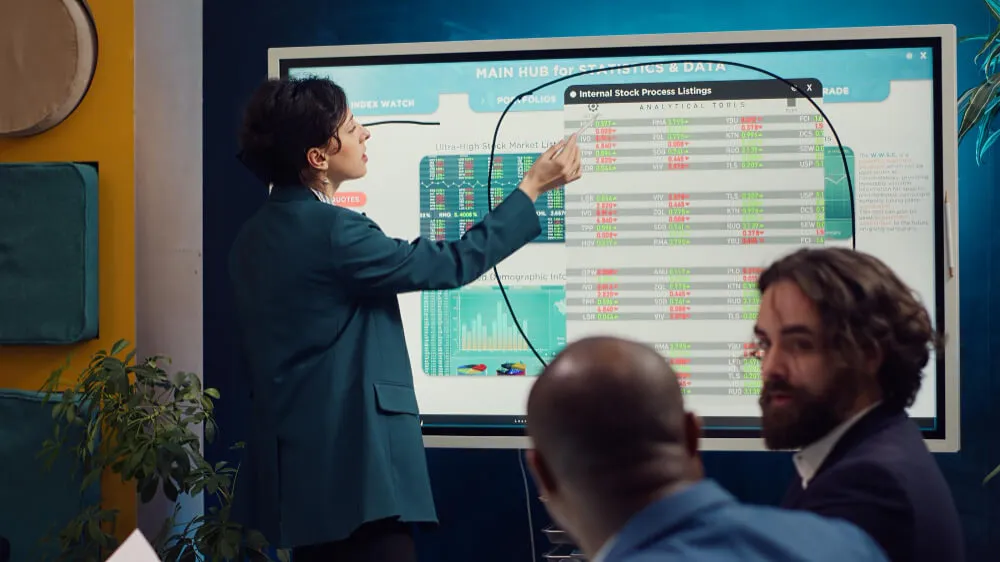In today’s screen-driven environments, knowing when to use a video wall processor versus a controller is key. Whether you’re managing a control room or a marketing hub, this quick guide clears up the confusion and helps you choose the right tool—no tech headaches included.
What Exactly Does a Video Wall Processor Do—and How Does It Function?
You can think of a video wall processor as the central brain that powers and organizes your display content across multiple screens. Take various video input sources (like laptops, cameras, and streaming boxes) and stitch them together into a smooth, unified output that spans multiple screens.
The magic lies in real-time image processing. A processor takes care of the hard work. It can enlarge one source on a 3×3 video wall or show multiple feeds in well-sized windows. It’s ideal for high-performance environments where visual precision, speed, and flexibility are critical.
And when paired with Monitors AnyWhere’s MAWi platform, processors can be deployed with ease. With a web-based interface and centralized control, even complex content arrangements can be managed like a pro—no rocket science required.
Explore our digital signage systems.

Exploring What a Video Wall Controller Does in Multi-Screen Display Setups
Now, enter the video wall controller—your system’s command center. Instead of focusing on processing visual inputs, this device distributes the output across multiple screens. It’s all about control, layout, and screen coordination.
Controllers act like digital traffic cops. They tell each screen where to pull content from, when to show it, and how to position it. With Online Monitors AnyWhere, you get powerful controller capabilities from the cloud. That means you can manage screens from anywhere, anytime, with just a few clicks.
Use a controller when you want to schedule content, update remote displays, or manage video walls across different locations. Bonus: No advanced tech skills required to jump in and start managing your displays.
Key Functional Differences Between Video Wall Processor and Video Wall Controller
Let’s get down to the nitty-gritty.
Video Wall Processor Features
- Main Function – Processes and renders video inputs
- Ideal for – High-end visuals, live data feeds
- Flexibility – Handles complex image composition
- Deployment – Often hardware-based
- Example Integration – Perfect with MAWi Spacewall
Video Wall Controller Features
- Main Function – Controls display layout and output
- Ideal for – Centralized content control
- Flexibility – Great for scheduling and automation
- Deployment – Software or cloud-based options available
- Example Integration – Streamlined via Online Monitors AnyWhere
The difference boils down to processing vs. managing. One makes the image look amazing. The other decides when and where it goes.
Try our MAWi video wall software.
Deciding When to Choose a Video Wall Processor Over a Controller (and Vice Versa)
So, which one’s your ride-or-die?
Use a video wall processor when:
- You need high-resolution inputs split across massive displays.
- You’re running real-time surveillance or data-heavy dashboards.
- Your business relies on visually intensive environments like command centers or event broadcasting.
Use a video wall controller when:
- You need to control and distribute content to screens in different locations.
- Your team requires flexible scheduling and the ability to manage content remotely.
- You’re working with digital signage systems in retail, hospitality, or internal communications.
Still unsure? No worries. Monitors AnyWhere has helped IT leads, marketing teams, and operations execs find the perfect match between processor power and controller clarity.
Need help picking the right tool for your screen strategy? Let’s talk.
How Video Wall Processors and Controllers Combine for Maximum Efficiency
Here’s the kicker—video wall processors and controllers work best together. One perfects the content, the other places it exactly where and when it’s needed. Using MAWi’s video wall software makes it easy to control multiple screens. You get real-time previews. You can schedule easily and use drag-and-drop features.

Deciding Between a Video Wall Processor and Controller: Key Insights to Help You Choose
And remember, no one said you can’t have both. Here’s your cheat sheet before making the call:
- Goals first: Do you need complex content rendering or just streamlined management?
- Scale: Are you managing 4 screens or 400 across multiple offices?
- User skills: Do you have IT staff on deck, or do you need something plug-and-play?
- Budget: Processors can be pricey, but are necessary for high-end visuals. Controllers, especially cloud-based ones like Online Monitors AnyWhere, are scalable and budget-friendly.
Final Thoughts: Find the Right Fit for Your Video Wall Vision
Choosing a video wall processor or a controller is key for good screen management. With Monitors AnyWhere, MAWi, and Online solutions, you get more than tools—you get seamless control, creativity, and clarity across every screen. Your video wall vision starts here.
Ready to build a video wall that works for you? Let’s get you set up with the right tools, so you can focus on what really matters: making your message shine.
FAQ
Can a video wall processor replace a video wall controller?
Not exactly. While some advanced processors offer basic control features, they’re not designed for large-scale screen management. To manage content and scheduling effectively, a controller is still the better choice.
What are the main advantages of using a video wall controller over a processor?
Controllers are typically easier to set up, scale, and manage, especially across multiple locations. They’re ideal for remote access and digital signage needs.
Do video wall processors support multiple input sources better than controllers?
Yes! Processors excel at handling multiple input types and can combine them into a single layout with impressive visual clarity.
Are video wall controllers easier to set up than video wall processors?
In most cases, yes. Controllers (especially with MAWi or Online Monitors AnyWhere) are designed for simplicity and don’t require deep technical knowledge to operate.
Which is more cost-effective: a video wall processor or a video wall controller?
Controllers tend to be more affordable and scalable for growing businesses. However, processors are a worthy investment for environments where visual performance is mission-critical.




